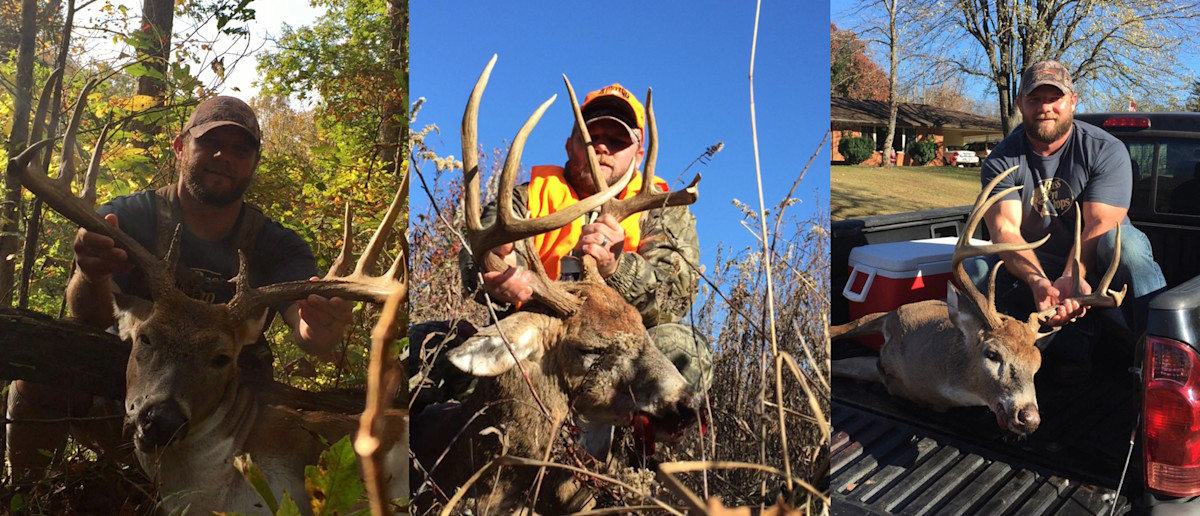
By Andy May
We’re back with another DIY Deer Hunter Profile, the Q&A series where we dive deep into the minds and experiences of some of the best do-it-yourself whitetail nuts across the country. Today we’ve got a really interesting conversation with Justin Wright, a serious big buck killer from Missouri. Take a look below, and if you haven’t seen all of our previous DIY Q&A’s, when you’re finished with this article, click here to see more.
Q: Can you tell me a little bit about where you hunt?
A: I was born and raised in the hills of southeast Missouri. The area consists of big vast amounts of timber with little agriculture. I hunt a mix of national forest and some smaller public pieces that do have some crop fields. I have access to a small amount of private that is pressured more than most of the public I hunt.
Q: You may be one of the most prolific killers I know. Can you tell me how you have been able to reach that level of success?
A: For me hunting big bucks never came easy! In my early childhood my dad took me hunting often. There was always something that fascinated me about a whitetail deer. I had an itchy trigger finger in my early years and shot my fair share of does. My dad was a pretty successful rifle hunter and killed a number of big bucks. I really wanted to take my game to the next level after several seasons of shooting the first deer that came by.
As I grew older into my mid-teens I decided I was holding out for a buck. For six straight seasons everything that could go wrong went wrong. Moving too soon, winded constantly, bad shots, and the list goes on. I couldn’t seem to break the curse. I put a bad hit on a buck that was very nice and never was able to find him. I searched the rest of that day and even put in another full day of searching later for him. That moment was the true turning point for me.
That off-season I bought a bow and soon deer hunting became an addiction. I became obsessed to say the least. I spent a ton of time in the woods and slowly but surely my success started to come. I learned to read the sign and learned that I needed to find the thick stuff in order to get closer to the bucks. I really believe time spent in the woods was my best teacher, learning from many mistakes along the way.
Q: A couple years ago you had an epic season. I think maybe you had five or six buck kills? I remember it well because I had my best season as well. Can you give me a recap of how you were able to achieve that?
A: In 2015 I had a year I’ll never forget. I was able to do a couple out-of-state hunts and also had my three buck tags for Missouri. I managed to take 5 bucks that year.
I run trail cameras but had only really had them out on a couple pieces of public land in Missouri. The spring of 2015 I had done some scouting on some public land in IL. I located a few spots there that I thought set up well and found good buck bedding nearby.
I was able to harvest a good buck in early September in Missouri with my bow the 5th day of season. The key to this hunt was being close to his bed.
I then ventured to hunt a piece of public in Arkansas that I had never been on. Mid October and my first hunt was pretty slow. I studied some aerial photos along with topo maps and really focused in on a spot that caught my attention; a small thicket well away from any access points. I hiked in the following morning and observed the area a safe distance away from the thicket. Nothing would show, so midday I got down and did some low impact scouting. I located a lone oak dropping acorns right on the edge with some sign under it. I set up just off the oak with a strong wind in my face. At last light I had a decent 8 show up and I was able to put an arrow in him at only 8 yards.
I switched gears from there and decided to put some time in Illinois where I had scouted in the spring. It’s early November now and I had set myself up in between some of the doe bedding and buck bedding I had found. Several days of hunting were only producing small buck sightings. I was hunting almost a mile or more (from the parking) in each hunt. After a couple days of that I had enough and I dove right in the heart of the doe bedding are actually kicked 3 does up going in. I set up 30 or so yards downwind of where they laid. I had a couple deer come by including a small buck that headed off toward the does I had jumped. Not long after that I heard grunting and he brought them back by me. Shortly thereafter I saw another rack coming my way nose to the ground. He was circling in right toward the bed I kicked the doe up from. At 27 yards I slipped an arrow through both lungs and I now had my third buck down for the season!
Next was Missouri’s rifle season but I was undecided where to hunt. There was a buck that was in the back of my mind though and I really wanted a crack at him. I had found one of his sheds two years prior and had trail camera photos the previous year. I had actually kicked him up scouting one day in a nasty thicket in the spring of that year. This was an area that received a lot of rifle pressure. I went in real early opening day and set up well before daylight. Most of the pressure was going to be in the nearby timber and I was in a very small tree probably 10 feet off the ground in an overgrown field/thicket. It was the perfect bedding area. I heard tons of shooting the first couple hours of daylight and had some good action under me as several smaller bucks dogged does all morning. After watching some deer for a bit action started to slow then I noticed a nice buck working his way through the thicket. He kept looking back and that caught my attention. I readied the rifle and sure enough not long after all I could see was tines moving through the brush. It didn’t take long and I knew right away who it was, the buck I had been looking for. I placed the crosshairs on the front shoulder and at the crack of the gun he hit the dirt! To say I was excited was an understatement. He was a very old mature animal.
Next was late bow season, Missouri, early December. After the Missouri rifle season the deer are pretty spooky from all the intense pressure! There is a spot on public I’ve scouted in the past and knew the deer seek security there after days of pressure. It’s a wet land with a pretty deep creek that crosses there. There is no easy way to access it and its deep on the public. I slipped in and set up during the first week of December one evening near a crossing in the creek. I had just settled in my lone wolf and was caught off guard by a buck slipping by. He got by me with no chance at a shot. Unable to get back out there and knowing the buck had survived gun season I was eager to get back at it but work wouldn’t allow for it for a week or so. The following week required going in on a slightly different wind and I set up a little closer to cover all angles he could cross the creek. I took my time the last 100 yards as it was dry and the woods were loud. I got settled in, and as the evening faded, the buck stood up not 60 yards away. There was some brush that separated us and he worked his way toward me. Once he cleared all the brush I drew my bow and touched the trigger. Just a few hours later I put my hands on the 5th buck I had down that season. It was a season I’ll never forget!!
Q: What part of the season has been the most productive for you?
A: I’ve had success during all parts of the season. From warm weather to freezing cold I’ve taken bucks in all conditions. The key is to be in close to where they bed no matter what time of the season. For me personally, I would say that late October has been where most of my success has been. The older bucks seem to be on their feet just a little earlier in the evenings and stay on their feet a little later in the mornings.
Q: If you could choose to hunt a particular buck during any part of the season when would it be and why?
A: I would have to go back on the last question and say late October again. It’s just the time of the season that I really see the bigger bucks on their feet just a little more. They aren’t running crazy through the woods like the smaller younger bucks. They still move with caution and avoid areas where other hunters have been. The key for me is locating their bedding area. I try to get in close to bedding either morning or evening (preferably evenings for me) then you really have a good shot that last week of October to harvest a mature animal.
Q: You hunt at an incredibly high level. Tell me a little bit about your level of obsession when it comes to hunting. Where that came from and what sacrifices have you made to reach this level?
A: When I was younger I pounded the woods. I hunted all the time. Squirrel, rabbit with dogs and always deer hunted as far back as I can remember. I just always have had a love for the outdoors. Through my school years I ditched parties because I knew I wanted to get up early the next day and go hunting. It was number one to me and I wasn’t going to miss a chance to go.
Now days it’s turned more into a balancing act. I have a family and a busy job so I don’t get out anything like I used too. Even now though, if I have a couple free hours I am hitting the woods. I’ll get up extremely early and go hit the woods on my days off and still be back home in time to do the family thing. I have my little one several nights a week as my wife works well after dark. It doesn’t allow for the evenings after work much to scout or hunt. I still fit it in even with my busy lifestyle. No matter how busy one is if you love something you find a way to fit it in!
Q: How important is being mobile when it comes to your style of hunting?
A: Mobile hunting is probably the biggest key to my success. I’ve never hunted from ladder stands or permanent hang on’s, but I used to hunt the same areas over and over. Once I started being more mobile and realizing that the first time in is always the best chance to kill a mature deer, my success really soared. Sure there are situations that allow a person to hunt a spot more than just a time or two but the majority of the time your best chance is first time in that spot for the hunting season.
Q: What pieces of equipment do you relying on for your type of hunting and success?
A: I use a compound bow mainly but do hunt the rifle season here in Missouri as well. Lone Wolf Tree Stand and sticks are critical to my style of hunting because they are light, pack well and are quiet. I don’t get too carried away with clothing. I want something breathable and when it’s cold you have to have a good layering system to stay warm and stay in the stand.
Trail cameras are definitely something I use now days to help out with my lack of time. Since I can’t spend the amount of time I would like to in the woods these days I use cameras to help me find patterns and also great for showing what is in the general area. The information I gather is best used the following year or years.
Q: Where do most hunters fail when trying to pursue mature bucks?
A: I believe that most hunters now days read magazines or watch TV shows and then they try to duplicate what they see or read. Everyone’s situation is different. Take a magazine writer for instance; he may write about his experience on a big piece of land that was managed for big deer and how these deer act and move there is completely different than what MOST hunters are faced up against.
Consider a TV show as well. I’m not going to knock on mainstream hunting but for the average joe or the young hunter trying to learn that watches these show, it can be a bit deceiving. They see these big bucks killed over food plots or field edges then they go to the land they have to hunt, be it public land or even private that they share with other hunters. They sit the field edge and don’t see a deer. It’s just not realistic to what 99% of the hunters have to deal with out there.
I believe it goes back to the basics really. Most guys don’t spend enough time in the woods to really learn what they are hunting or to understand their surroundings. There is so much out there to learn and pick up on. Watching a TV show or reading a magazine just isn’t going to cut it. Time spent scouting and hunting is really the best teacher of all.
When talking about a mature buck, that is a whole different playing field. They typically don’t act like your average deer. If the land is pressured (which is most of what I hunt) they move through the woods and bed/live in the safest most secure locations, otherwise they don’t reach maturity. As the saying goes and this is especially true for mature deer, there are no short cuts, do the work and put in your time.
Q: Give us an idea about how much time you spend on scouting, learning about, and chasing mature deer.
A: For me this is a year around obsession. To give an idea of the amount of time I put in would be difficult giving my crazy busy lifestyle. Let me tell you this though, there isn’t a day that goes by that I’m not thinking or planning some way to kill a buck.
If I get a spare evening or say a free day when the wife and little one are going somewhere I’m hitting the woods. That may be December or it could be July, either way there are benefits to getting out there as long as you’re smart about it. Don’t go stomping into a spot in October that you plan to hunt in a few days just simply cause you have a free day. Instead spend that time maybe scouting outside of the area you plan on hunting like a food source or even a good ditch crossing several hundred yards from the planned hunt spot. You can scout for big tracks which to me is the number one when doing some low impact scouting and also check local sign like rubs and scrapes in the area to make sure the buck is in fact in that location. That is a great way to monitor certain bedding areas. Find the bed then find the food. Often it isn’t right on top of one other. Heavy acorn years can make it tough. Deer tend to not have to go far to get a full belly but you can still check locations outside of their safe zone and see if in fact the sign is there showing the buck is using that known bedding area.
Q: Describe a hunt that showcases what you think is your most important skill or factor when it comes to hunting big bucks.
A: I’ll use last year’s hunt for example. This is a spot I had scouted a few years prior during the spring. It is on public land and is in a pretty remote area. I found the beds which were on several secondary points and read the sign. The buck appeared to be dropping down off the points into the bottom and then heading on out toward the water and food source. My plan was to come back in the fall and hunt it on the right wind. When the time came I went in and found that some other hunters had found this area or found sign just outside of the beds in the bottom and they set up shop! I backed out and let it be for that season. I knew with those hunters placing ladder stands and even a hang on or two around there they planned on hunting it hard and the buck was going to relocate.
Fast forward to the following spring… I wanted to go back in and check the sign around that bed. The stands were taken down and there was sign showing a buck was back. I planned to strike early in the fall when given the right conditions. Once fall came around I had that spot in the back of my mind. I waited patiently and when October arrived I got just what I was looking for. I had the right winds and conditions to slip in the spot and take a shot at this. It was a windy warm day. I knew that the winds would blow my scent out of the area being strong and with the warm weather I figured he would head for the nearby water source. I slipped in and was checking the wind currents the entire way to make sure things were consistent. I got within roughly 150 yards of the beds and set up my stand. At last light the buck showed and I put an arrow in him. I retrieved him the following day and he is my best scoring buck to date.
I’ll mention some of the key points here that made this hunt successful in my opinion. I found the beds during the spring and figured out the winds he used them on. I studied the sign, mainly rubs to show me direction of travel from the bed toward the food and water source which I also located. When finding out that some other hunters had set up stands the year prior, I just backed out and let it be. I didn’t waste time sitting there knowing they had already ruined the best chance at getting him when they were setting up stands during season. When I finally did get the perfect conditions to go into hunt I was constantly checking the wind currents and I do this by using very tiny pieces off a cotton ball and watching what it does as it floats off.
There are so many things to consider when picking your spots and going in to hunt bucks with any age on them in pressured locations. Skip any one little thing and that just could be the difference in a deer on the wall or a deer that just got away. Often it’s the little things that make or break the hunt.

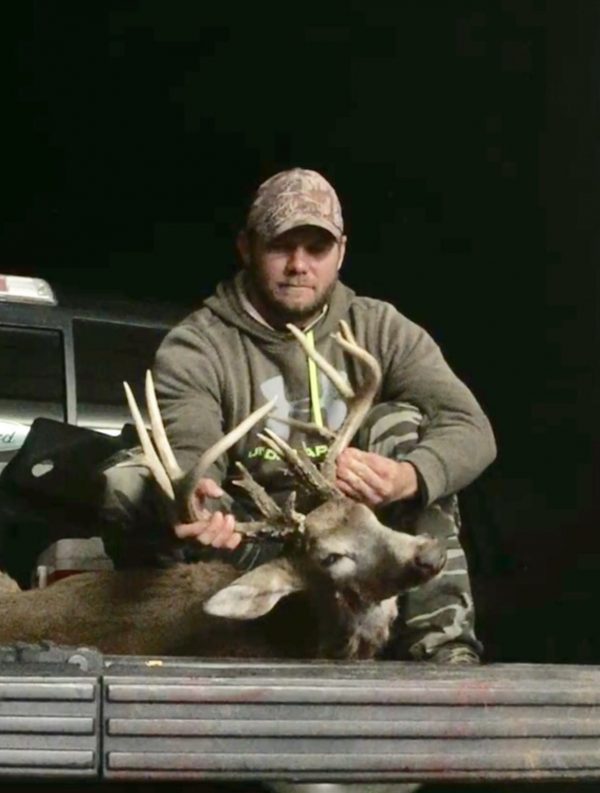
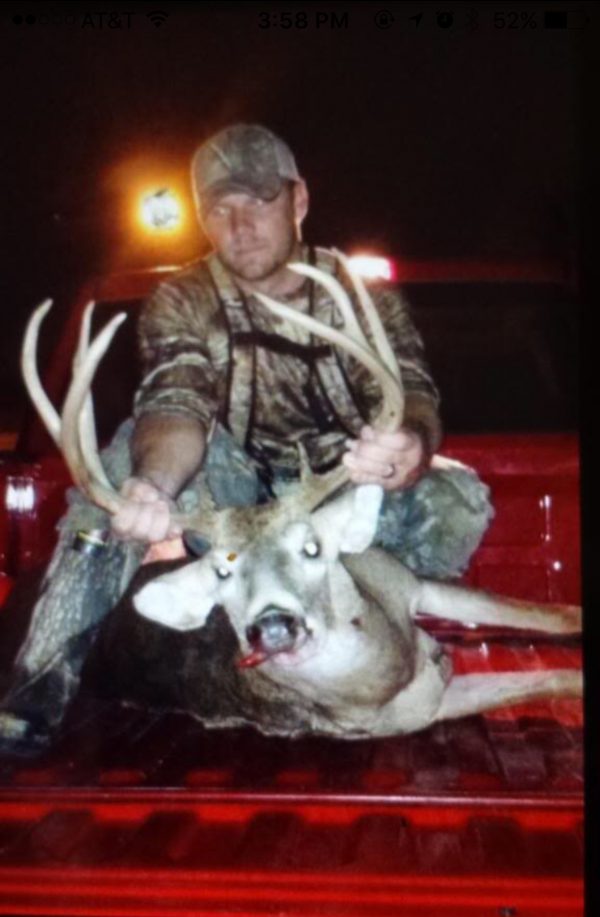
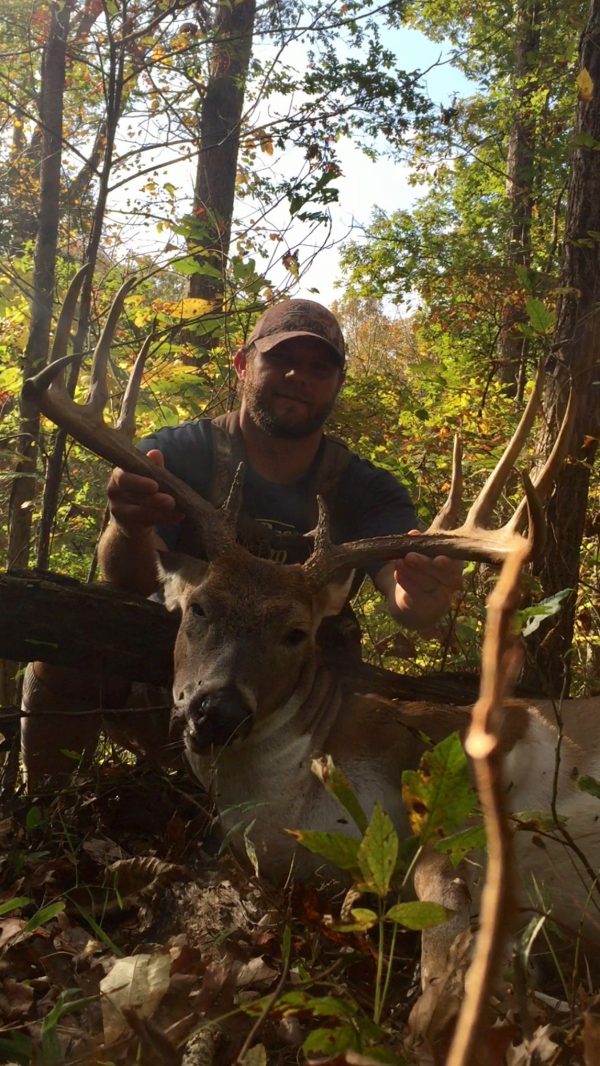
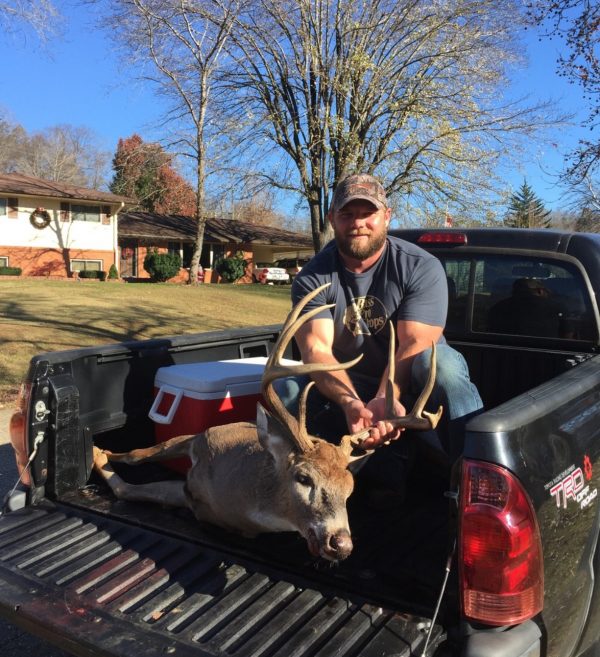




Conversation